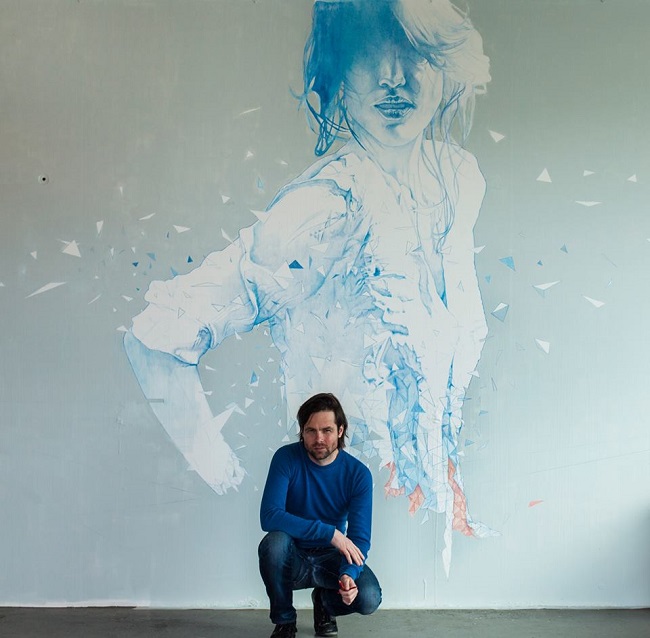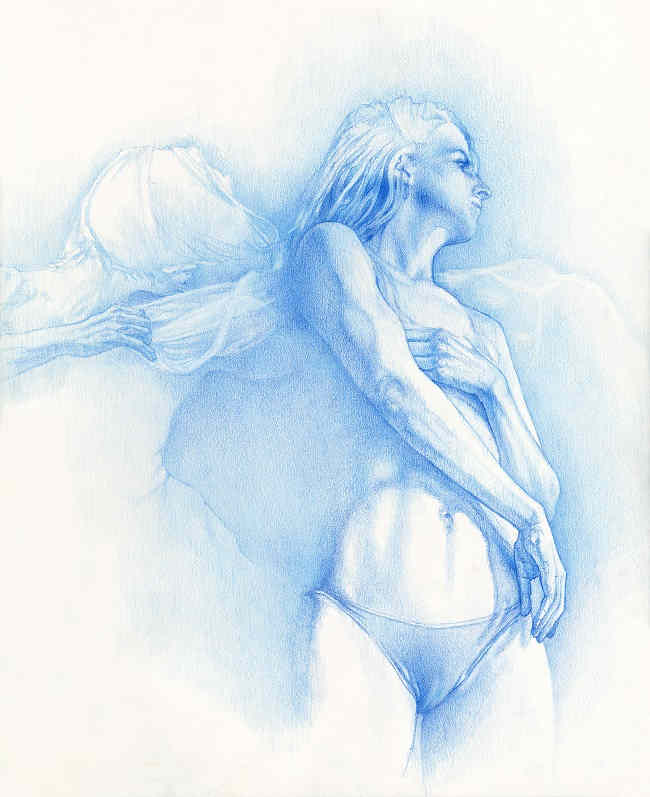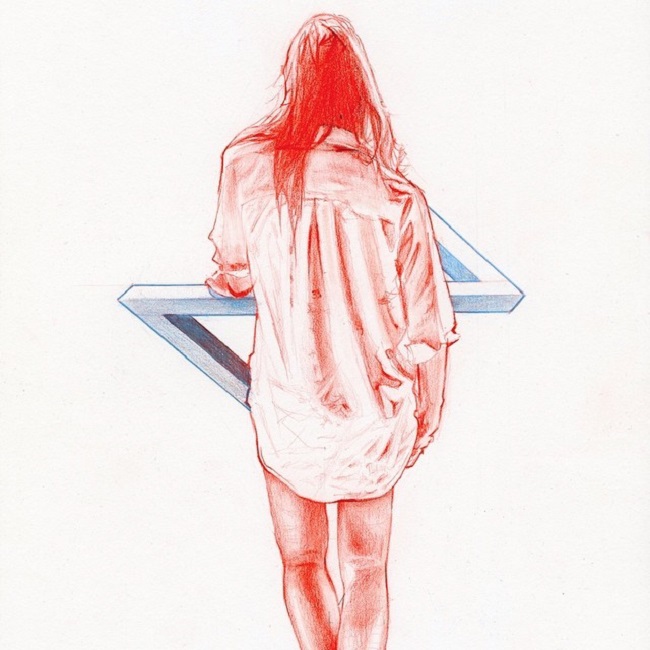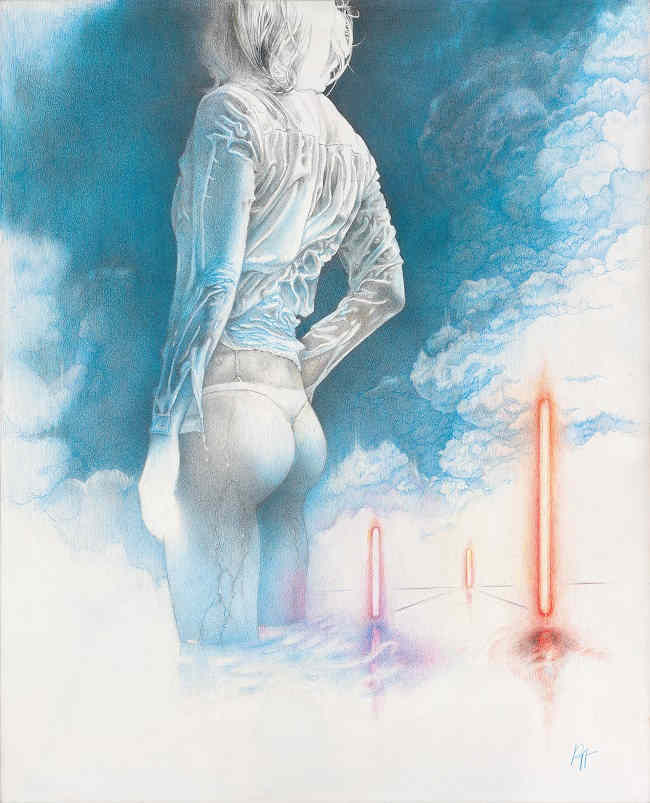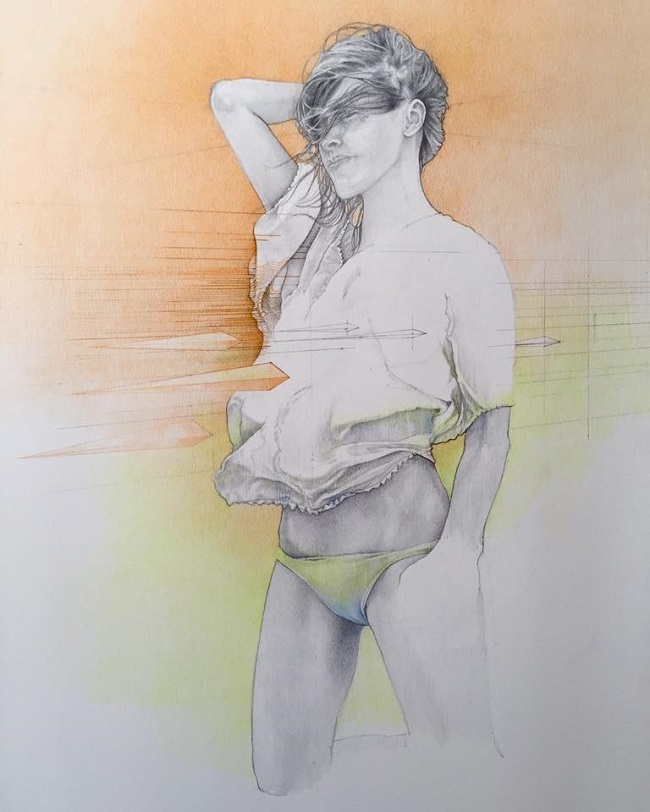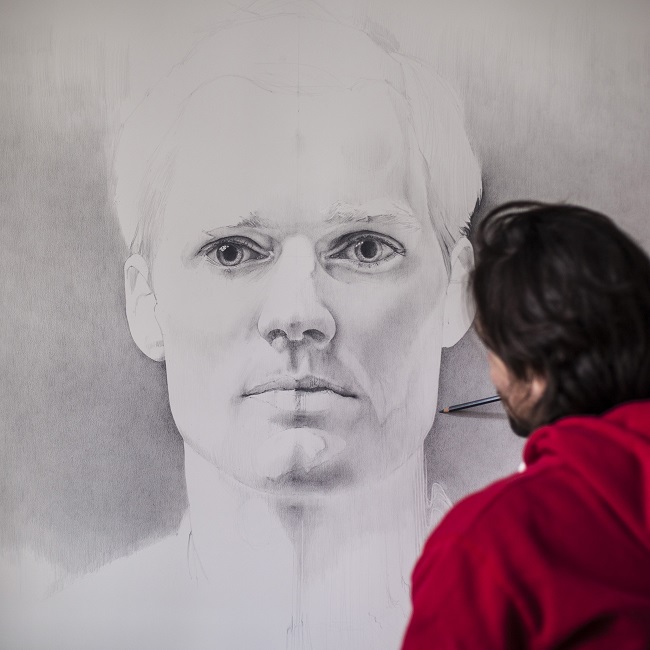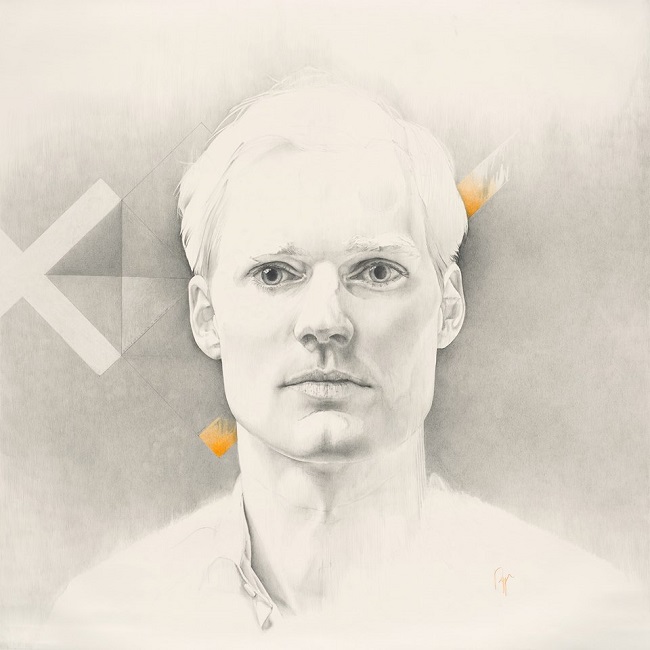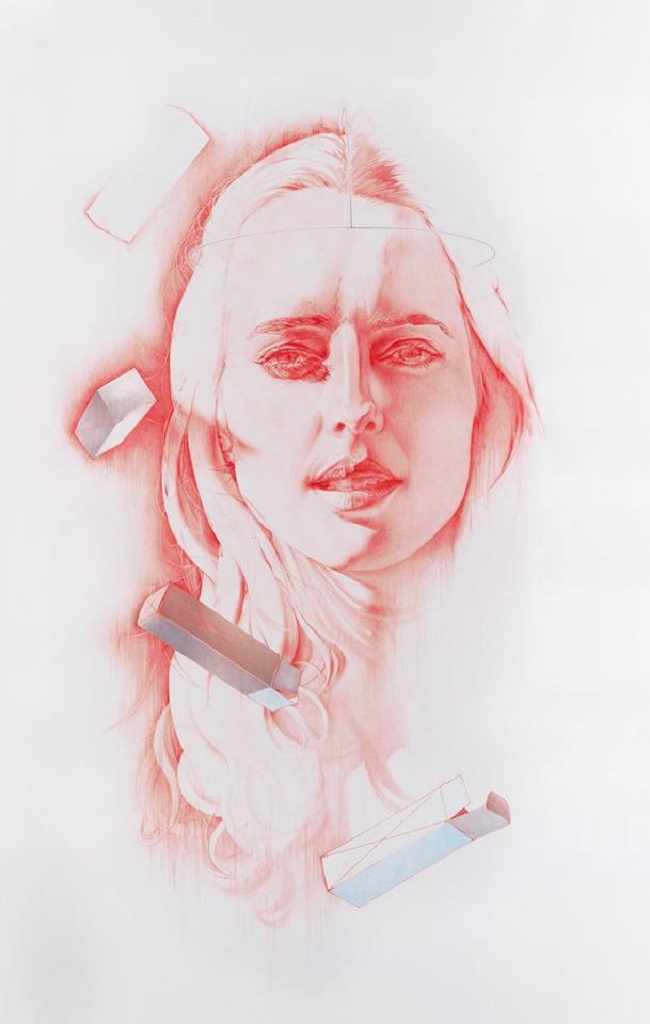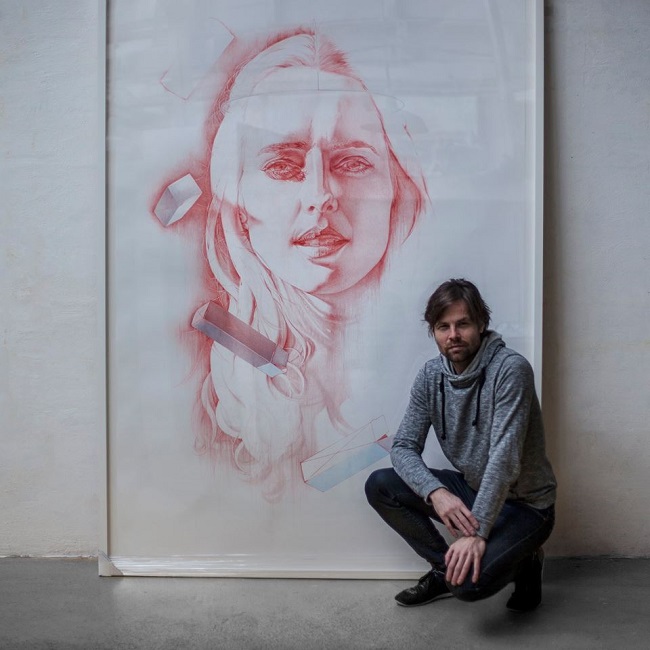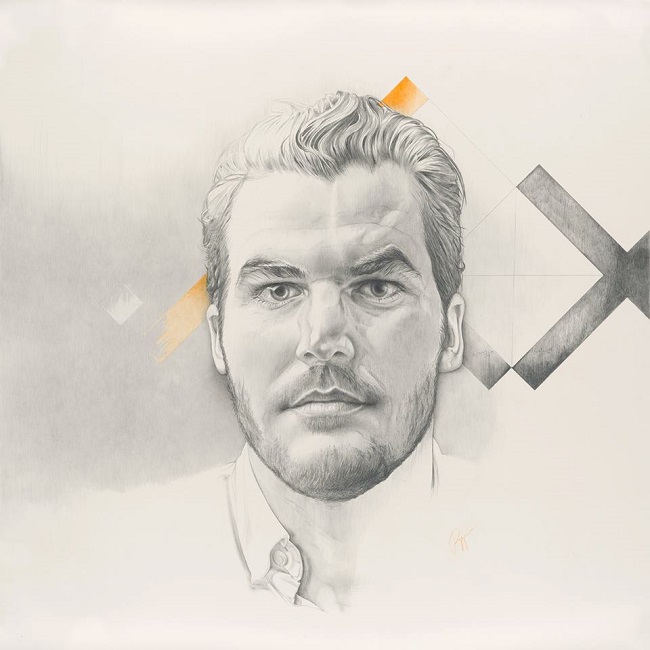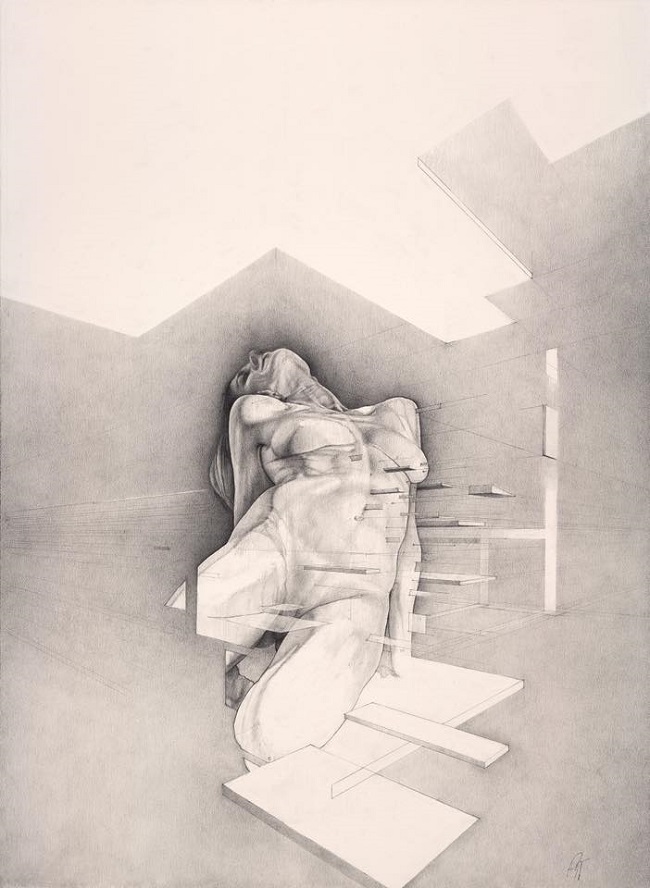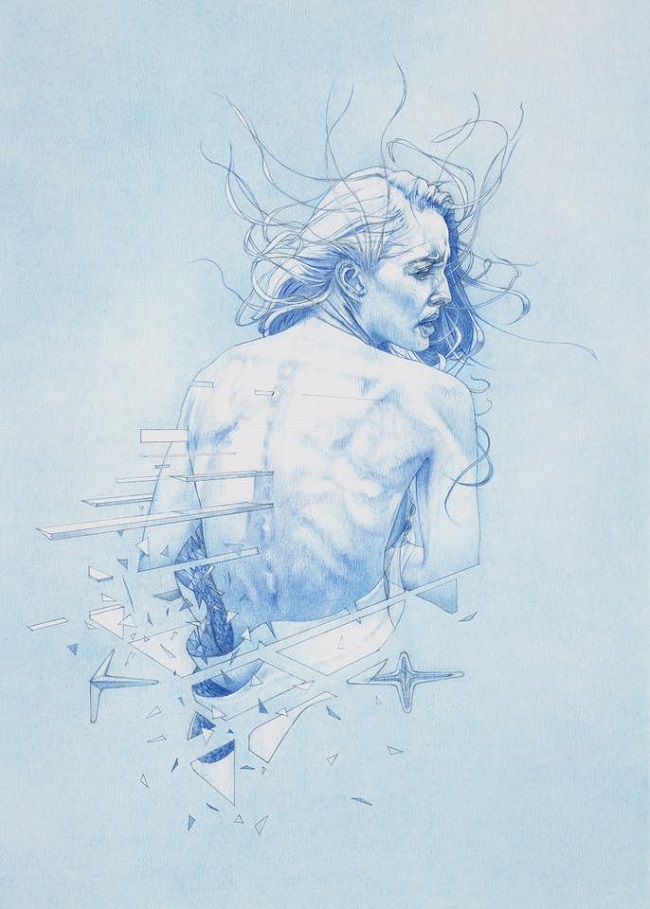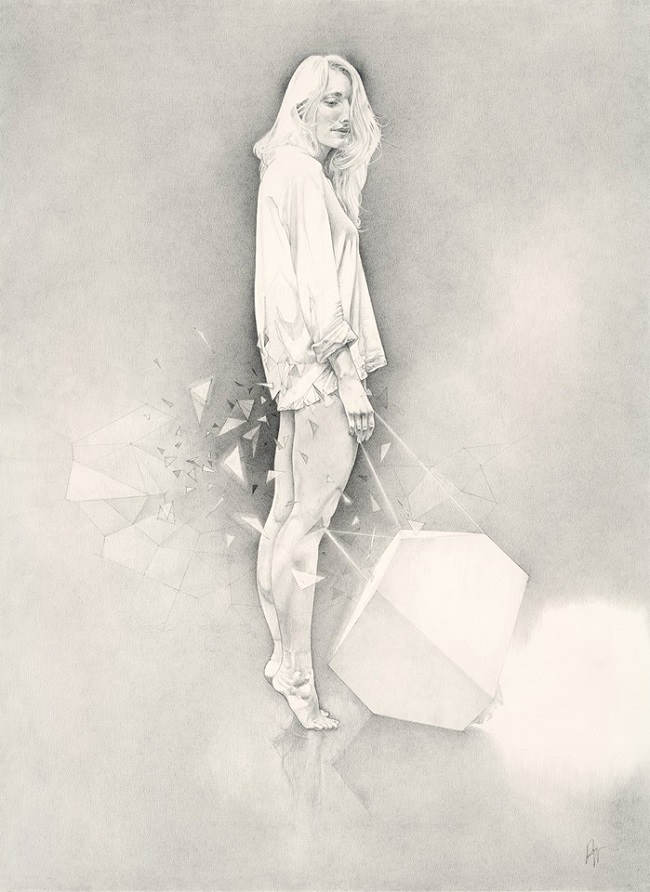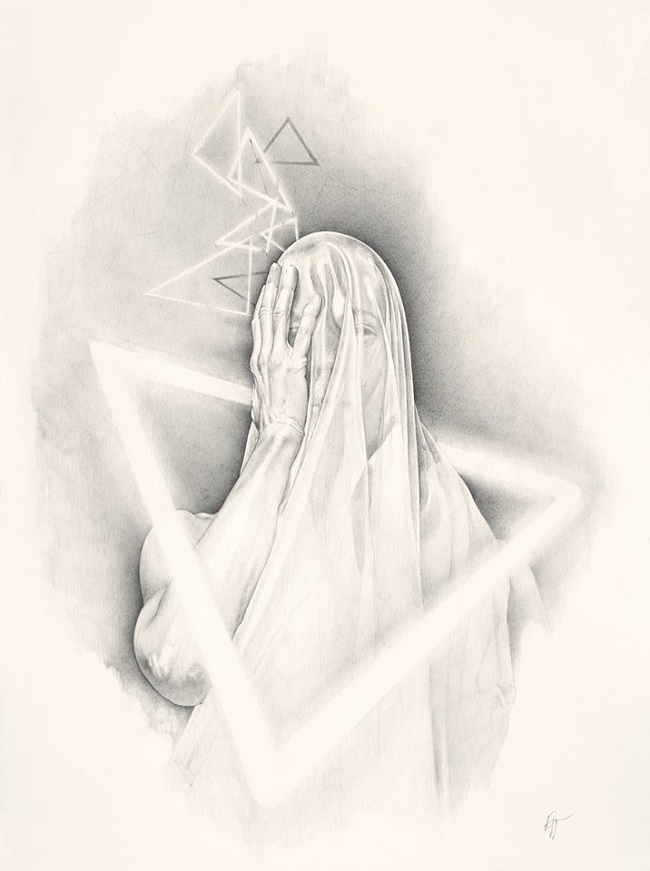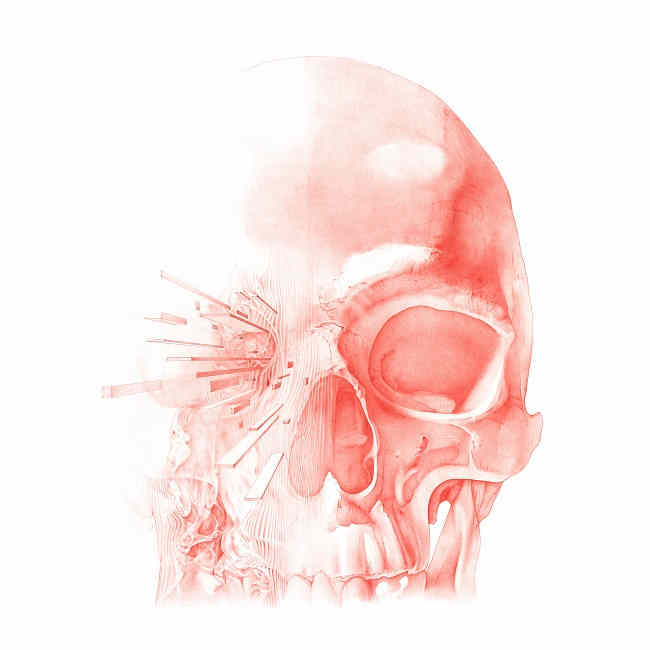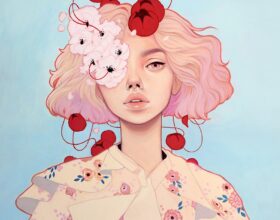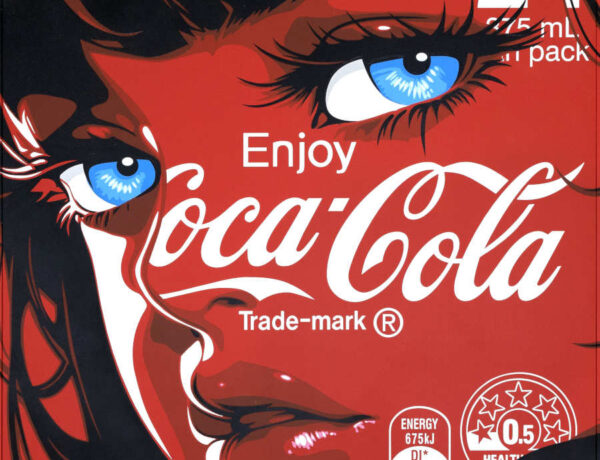 The innovations of Daan Noppen bring a curious new charge to the art of pencil drawing. His still life and portrait drawings are not only astonishingly detailed, but are scaled to an enormous size. Breathing life into his subjects, he endows them with soulful presences that are indubitably palpable. However, if you look closely at each piece, a new intricacy reveals itself. He has utilized mathematical equations in between the lines of his drawings; relating the immaterial nature of the human presence to his inquest into the logic of our reality.
The innovations of Daan Noppen bring a curious new charge to the art of pencil drawing. His still life and portrait drawings are not only astonishingly detailed, but are scaled to an enormous size. Breathing life into his subjects, he endows them with soulful presences that are indubitably palpable. However, if you look closely at each piece, a new intricacy reveals itself. He has utilized mathematical equations in between the lines of his drawings; relating the immaterial nature of the human presence to his inquest into the logic of our reality.
“I rather wanted these ideas to be a vehicle, to magnify the emotions that the characters express in my drawings. The geometry you see in my work visually represents higher dimensions that we normally don’t register as a physical entity, like time for example.”
Recent works illustrate his continued explorations in art; through mathematics, geometry, and physics. In the same breath that his figures appear to be scrupulously actualized, they interact ethereally with the vacuous vector space that surrounds us. This is that ever-elusive intellectual stir, designed and presented beautifully by Amsterdam artist, Daan Noppen.
Daan Noppen
Website | Facebook | Instagram | Tumblr
How did your career as an artist get started in the Netherlands? Did you grow up making art? Do you have any formal education or training?
I remember always drawing when I was young, but I kind of lost sight of it for a while. My parents stimulated me a lot but no one really had a background in art. I ended up studying design at the Design Academy in Eindhoven, where I picked up drawing again. Most of my skills in drawing I learned by just doing and looking at the work of other artists. After graduating, I worked for 1 year at an online company but soon decided to start my own design studio. I wanted it to be a mix between developing personal and clients work. I even received a grant back then, for setting up my studio with that concept. After I was nominated for various design awards, the studio became so busy developing work for clients that my personal work soon moved to the background. I remember I came to a point where I just felt lost and empty; I was not creating anymore.
A friend of mine was shooting a film for an art project in Miami at the time, and asked me to come over and help him. This Miami trip ended in meeting other artists and joining them from one art residency to another for a period of two years. It was a great time of for me to think about what I wanted to do. I decided then that I just wanted to make personal work; I just had no idea how. It took me quite a while before I was able to devote all my time just to art. People always talk about their big break through, but to me it feels unfair when people paint that picture. I always believed it was going to be like that too, and there are those events that you can recall as a turning point. But to get to that point it takes endless small steps and persistence.
Things hitting of with my art did not really start in the Netherlands but rather in the Instagram space, which made a big impact on my work in many ways. I suddenly started selling work in Mexico, the US and UK. Some of those people that started buying a print have become collectors and own multiple works. I think the Netherlands is behind when it comes to Contemporary Art at the moment. This ‘New contemporary’ art movement is not yet really alive here in the Netherlands.

Your work is so personal and individually subject-focused with remarkable detail infused into every centimeter. I, and certainly others, am baffled at how this is done! When/how did you discover you could draw in such a hyper-realistic style?
When I rediscovered drawing, I looked at it from a total different perspective than before. At University, I was fascinated by what you could do with computers and stuff, Photoshop had just become a thing. This totally flipped things like photography around. Studying digital photography, 3D animation and graphic design has enabled a big change in my work. My work became more realistic and detailed over time because of this influence I guess; it was quite rough in the beginning. But this happened mainly when I started to draw every day for longer and longer sessions. I believe to truly tap into your potential you have to persist, and keep creating. I need to be touched by a work, if I look at the work of Jeremy Geddes I sense that he put his soul into every centimeter. The work breaths his being, that is when a work grants me. This is something I always aspire for my own works. Though despite this hyperrealism I always want the work to remain a drawing or a painting.
I notice most of the work I’ve seen from you is on an incredible scale. How big are your pieces usually, and is there a specific reason for the size? Is it necessary to fit in all those tiny, exact details, or is there another significance?
Haha, yes. I love to work on a large scale; I really like the monumental aspect of it. On paper, some of them span 2×3 meters. Hypersurface II, a mural I did last year was 3×8 meters in size. I am currently planning to do some more murals for this year. Something happens in the brain when you depict a person larger than life size. I remember realizing this when I looked at the statue of David in the Louvre. Though the last couple of years I have learned to appreciate small size drawings and paintings. They are also a great way for me to try out certain ideas and new materials that I have. I have felt a great urge to go very far in creating those large pieces, also to a great extend in detail, yes. But for me, light is everything. To see light fall in a certain way on a hand or knee can be such a sensation for me, my soul is touched by that. I want to use that in a drawing or painting and extend on that.
Have you always been especially interested in portraiture and the human form? What inspires you about your subjects?
The human form is my greatest inspiration yes, but it is twofold. On the one hand, a very specific body part or physical expression about someone can completely fascinate me, and then I just want to grab that in a drawing. On the other hand, I want to juxtapose that image and displace its reality, sometimes very literal, where I put my subject in an environment that opposes it. Through the visual world, I create in my work I want to reveal the hidden layers of our desires, our pain and our cry for being loved.
Has your love of photography informed your drawing, and vice versa?
I have worked for Peter Greenaway, a British film director, for a while on some of his films and art projects. Through working on his projects, I became friends with his Director of Photography, Ruzbeh Babol. To see and learn from this guy to create complete environments with often just light was so amazing, he was literally painting with light. This has had a great impact on my work. For a long time when I was designing, photography was a very important tool for me. In the beginning when I started to create personal work, I choose photography and film as my main medium; it was such a powerful way for me to express my emotions. But when I re-discovered drawing and understood how this medium could take me beyond our existing perception of reality, photography started to become more like an ingredient of the process. I am fascinated by what you can achieve by designing light in your image, so rather than seeing photography as a result; I started using photography as a means to sketch out ideas for drawings. At a certain point though, when you draw so much and look at the world around you in that mindset you start to build a library in your head of how things look and work.
Your style is unique in contemporary art, and certainly produces very expressive pieces. Can you talk a little bit about the evolution or progression of your projects both in concept and in technique?
Thank you! My work takes shape very intuitively, and I have to add, I like to react to my own work. So, I will leave a drawing for a few days and go back to areas in the drawing and change them or add layers of detail or surface. Sometimes I look back at drawings or paintings I made over a period of time to analyze what is there and try to make sense of where I am going next. It feels like a puzzle, and every piece of work I make is a piece of that puzzle. My projects start mostly with a strong feeling of a specific mood, which mostly is a very primary emotion. I will go through tons of images of various media to try to paint a collage in my head of what I am after; I love to use tools like Pinterest for this. After this process, I often do a few photo shoots; they work like a lab for me. This is where the narrative starts to take shape. I will use a lot of objects and materials to find a visual dimension that can extend on the emotion I want to express. I have mainly worked in drawing the last couple of years but lately I am creating mixed media works with oil, or solely work of oil. I paint not very differently from drawing I think. I work in a lot of different layers and go back to areas extensively. I guess what is a new dimension for me is that I started working with a larger color palette and I am currently starting a project that contains drawings of scenes with more people rather than one centered person. The narratives that I currently want to visualize are more complex and layered than before.
What is your studio in Amsterdam like? Are you a full-time artist? What was the journey like getting to where you are in your career now?
What should I say; I am currently in between studios. I had to move out of my previous studio and currently moved to a temporarily space. I am looking for a studio where I can also build things, and make more of a mess. I am currently creating works that consist of multiple wood panels, which I need to create myself. But I like to create the whole artwork and it gives me more freedom and new ideas for materials and shapes. I work as a full-time artist. At a certain moment, I quit my job and started freelancing to make myself more flexible on the hours that I was working, and when I did them. The amount of time I freelanced I slowly build down. It is only since last summer that I am working only on my art, though. It has been quite a bumpy ride. You want to devote all your time to your art to progress, but then you also have to stay afloat. This is the great paradox always. You have to persist and sacrifice a lot to become a full-time artist.
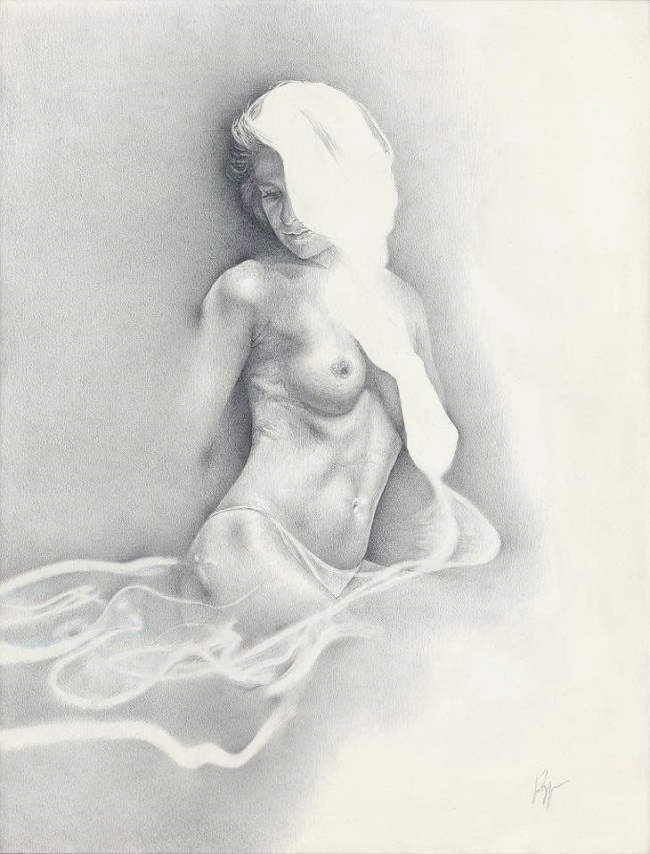
What is the significance of the shapes and fractals in your work? Is there a specific motivation for the unique blend of hyperrealism and geometric design?
I have always been greatly fascinated by science. When I was studying Physics, I was introduced to see the world around me in a completely different way, which I could not undo after that. It completely recreated my idea about how we perceive reality. I studied physics after my art education; I felt a red wire of the concepts that are current in my work are very much connected to science. But to me, the world of science visually felt very far away from what I was doing with the human form in my drawings. So, this lead to a very intense period where I tried to connect certain “scientific” concepts that fascinated me with the human form. For me they seemed to repel each other at first, mainly because I didn’t want my drawings to become “scientific”. I rather wanted these ideas to be a vehicle, to magnify the emotions that the characters express in my drawings.
The geometry you see in my work visually represents higher dimensions that we normally don’t register as a physical entity, like time for example. I do project them as a physical dimension because I want them visually to interact with what I see. So rather than to understand the scientific background, I want you to feel it down in your stomach. These visual layers should add to the narrative and reveal hidden layers about the emotions and relations that people in the scene of the drawing experience.

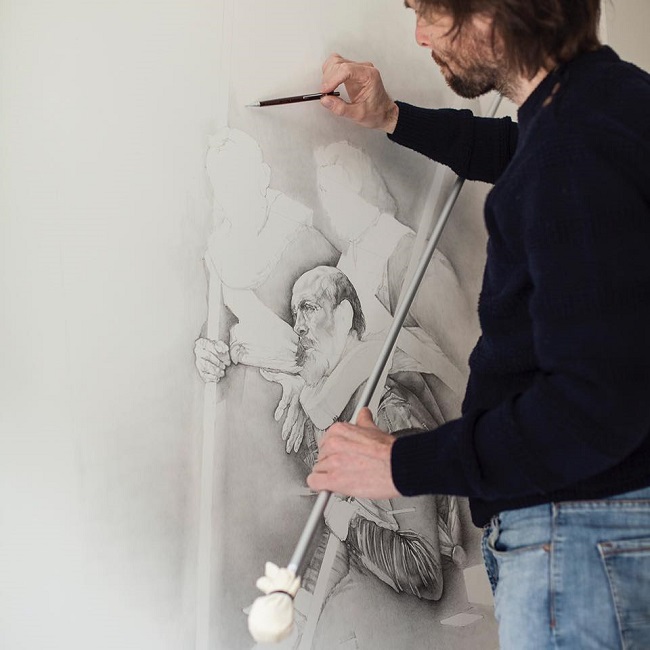
How do you bring mathematics into your concepts? Are you studying this in relation to your subjects, or to reality overall?
Mathematics is, in the end, nothing more than a language to describe the world around us. For me it has opened up a lot of doors to ideas and concepts that I had not thought of otherwise. How I use what I research happens quite intuitively again, and to transform the ideas that stand out for me into actual drawings takes quite a struggle always. There is not really a straightforward route. Sometimes I leave a work for months or even a year and then suddenly all the pieces fall in place and I know how to finish the work.
I still study books and papers about certain topics in mathematics and physics. Certain people that stand out for me for example is someone like Erik Verlinde, a Dutch physicist who has a profound new idea about gravity. Or Roger Penrose, a mathematician that also has some quite drastic ideas about physics. I went to a 3-hour lecture by him in Leiden where he tried, by starting to explain physics theory from almost the absolute beginning, how our Universe was in collision with a chain of universes that came before and after ours. Mind-bending!
Have you ever experienced any kind of censorship in reaction to your work in relation to nudity, expression, or otherwise?
It’s funny that you mention that, censorship is my great daemon. I have suffered a lot from censoring my own work for a long time, especially when it comes to nudity. It really slows you down and can send you lost in the woods completely. If I look at Hans Bellmers work and realize in what time this artist was creating his art, I feel so much admiration. This is an ongoing fight for me.
If you had to choose one piece or series to represent you as an artist, which would you present and why?
I feel with ‘Gauge,’ I came closest to what I want to express with my work. The geometrical layer in and around the character in the drawing directs the narrative of the work. It reveals the painful state of the woman. At the time, I was experimenting a lot with hues of blue that I came across when visiting Japan and studying contemporary artists inspired by Asian art like James Jean. I am really happy with the tone combination and simplicity of colors blue in this work.
I saw that you were the winner of the A’design Award 2016 for your arts division, in addition to your other very prestigious nominations throughout the years. Congratulations! Are you expecting to enter or be entered into any other contests in the near future?
Thank you for that! Yes, it was great to be part of that. I actively try to keep track of certain competitions and submit work but I have currently nothing planned. I am currently mainly focusing on creating a new body of work on wood panel where I mix drawing and painting.
What’s next for you, Daan? Do you have any special plans for new projects, travel, or gallery showings? What new horizons will you take on next?
As I mentioned before, painting is a new horizon for me now. And especially to be able to make outdoor murals is something I have been wanting to do for a very long time. The first thing coming up is a ‘Masterclass’ I give in Brooklyn, New York in June, at the Craft in Focus, New York. This summer I am doing collaborations with painter Schalk van der Merwe & Brittany Schall. Then, I have a group show coming up with Gallery Kallenbach after the summer with which I was fortunate enough to do a couple of amazing projects last year like being part to Aqua during Art Basel, Miami.


